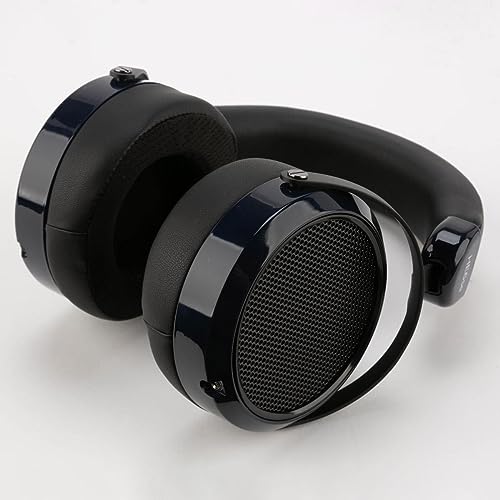Planar Vs Dynamic Headphones
Dynamic drivers are a great choice for those looking for headphones that can produce a variety of sound profiles. These headphones use a voice-coil and magnetic windings that are able to move forward and backwards to make the speaker's diaphragm vibrate.
This creates a spherical wavefront that represents audio more accurately. However, this can lead to distortion at higher volumes.

Cost
Dynamic drivers are simple to build and cost little. They're essentially a coil of wire (the voice coil) wrapped around a diaphragm made of plastic that's put into a magnetic enclosure, and they vibrate in response to the electric signals transmitted by your audio source. Due to this, they require less power to drive them than electrostatic or planar headphones. This makes them more portable and easier to use while on the move. The planar headphones, however, have much more complex motor systems and large diaphragms that require larger - or even multiple - magnets to move. They are often more expensive and heavier than dynamic headphones. They also require more power which is why headphones with planar technologies need an external amplifier.
Bass Response
Bass response is the primary difference between dynamic and plane headphones. Planar drivers have superior linearity, better deep bass extension and lower distortion when in comparison to dynamic headphones. They also provide more precise image and greater clarity. However, they might not have the slam and punch of dynamic headphones. This has led to the rise of hybrid IEMs that use both kinds of drivers. These IEMs are able to satisfy the various preferences of listeners and offer the best of both worlds.
The dynamic drivers that are used in headphones work by passing sound waves through a coil of wire suspended from a diaphragm. The magnetic field generated by the coil creates a vibrating diaphragm, which produces the sounds we hear. This can cause distortion at lower frequencies due to the diaphragm's motion is not accurate and consistent. It is important to consider your listening environment and your personal preferences when choosing the best kind of headphone for you.
The distortion of planar headphones has been significantly reduced because the vibrations have been uniformized and the diaphragm has moved less. In addition the flat shape of the diaphragm permits it to react more quickly to changes in the input signal. This is especially applicable to high-frequency frequencies. planar magnetic headsets deliver a sound that is more precise and detailed.
Dynamic headphones have a longer history than planar magnetic headphones and are the industry standard for bass response. In the past, dynamic driver headphones had flat frequency responses all the way down to 20Hz, while planar magnetic headphones had a greater roll-off in this range. As technology has advanced, however, many planar headphones now have a full range of bass response that is comparable to high-end open dynamic driver headphones.
The NAN-7 For instance, the NAN-7 is a high-end planar that delivers a very impressive sense of impact and bass. Its bass is agile and precise, with a great sub-bass slam. Its ability to provide an impressive and authoritative sense of bass ambiance and power makes it the perfect option for orchestral music such as the opening fanfare of Richard Strauss's Aleksandrs Solti's opera "Also sprach Zarathustra." The NAN-7 is also impressive in its imaging capabilities, with an impressive sense of clarity and depth.
Soundstage
Planar headphones generally have a wider soundstage. The diaphragm may be larger and move more evenly. This could result in a wide, flat soundwave, which enhances clarity and imaging. This is most noticeable on headphones with high-end features, such as the Audeze LCD-4 and HiFiMAN Susvara. However it is also true for more affordable choices.
Planar magnetic headphones, in contrast to dynamic drivers that only vibrate a portion of the diaphragm attached to the voice coil when an electrical signal is applied, have a greater surface area which can be moved. a knockout post results in less distortion even at high volume. They also have better transient response, meaning they can withstand sudden changes in the input signal.
However it is crucial to remember that planar headphones will still have a restricted soundstage if the headphone is not properly fueled. A lack of headphone amp power can cause a muddy bass and a "shimmer" effect that can make listening to music less fun.
Dynamic headphones produce an ethereal sound due to the fact that they can better reproduce the frequency response of the original audio recording. The dynamics of the drivers are also more natural and realistic than the 'plucked' sound of planar headphones. This difference can be compensated by a high-quality headphone amp and some of the latest headphones, like the Oppo PM-3 and HiFiMAN HE1000SE have a greater punch than older counterparts. This is due to the fact that the drivers are more advanced and can be driven by higher-quality headphone amplifiers.
Comfort
In recent years, headphones with planar magnetics are becoming more popular. This isn't a surprise since they produce a more accurate audio. The downside is that they're generally heavier and more expensive than dynamic headphones. This is because they have a bigger driver and require more power to uniformly move them. That's why they need balanced outputs found on most DAPs and dongles. Also, they tend to have more sound leakage than dynamic drivers.
